Back to the Index page
Rollgate Bank 17th August 2007
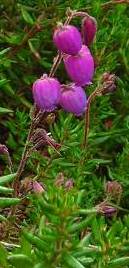 19 members and guests attended this meeting in spite of grey skies and the threat of rain (perhaps 3 o’clock on a Friday afternoon is a good time) – it was great to see such a good turnout, including some new faces. This was primarily a botanical trip, to see St. Dabeoc’s Heath (Daboecia cantabrica), but we did have Jim and Tom on hand to identify any birds we might see. The highlight for them was a buzzard flying low over the woods to the south, seen on the way back at the end of the afternoon.
19 members and guests attended this meeting in spite of grey skies and the threat of rain (perhaps 3 o’clock on a Friday afternoon is a good time) – it was great to see such a good turnout, including some new faces. This was primarily a botanical trip, to see St. Dabeoc’s Heath (Daboecia cantabrica), but we did have Jim and Tom on hand to identify any birds we might see. The highlight for them was a buzzard flying low over the woods to the south, seen on the way back at the end of the afternoon.
We met on Beadlam Rigg, at the top farm, and walked north along the track which passes firstly through arable fields on limestone, then through a belt of conifers where the ground is sandier before emerging onto the open heather moorland near the trig point at the top of Rollgate Bank.
On the way up Nan conducted an impromptu workshop on distinguishing yellow dandelion-type flowers, of which there were several in flower, notably cat’s ear (Hypochaeris radicata) and autumn hawkbit (Leontodon autumnalis) in the verge, and the larger corn sow-thistle (Sonchus arvensis) in the adjacent cornfield – this one is distinguished by orange glandular hairs all over the flower stalks and “sepal” bracts. We also identified some grasses and discussed the characteristic features of several other flowers. It is this kind of learning in the field that makes these outings so valuable. It is always so much easier to have an expert show you particular quirks, and to tell you which features to concentrate on, than to read the books, however good they may be. Apart from anything else it reminds you to look at the whole plant and to concentrate on the non-visible features such as hairiness, or toughness of stem, or the smell of crushed leaves.
The view from the top of the bank is extensive, and very attractive just now with the heather at its best: this is looking north east towards Rudland Rigg.
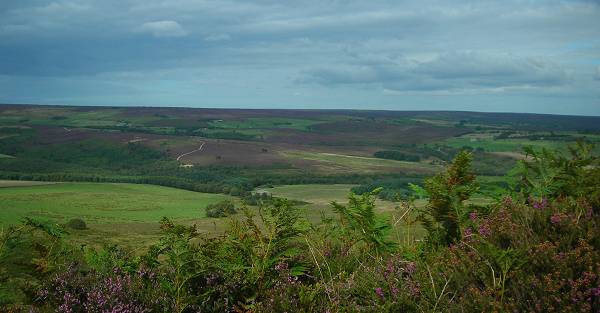
We then continued down the bank in search of the St. Dabeoc’s Heath that was recorded here last year.
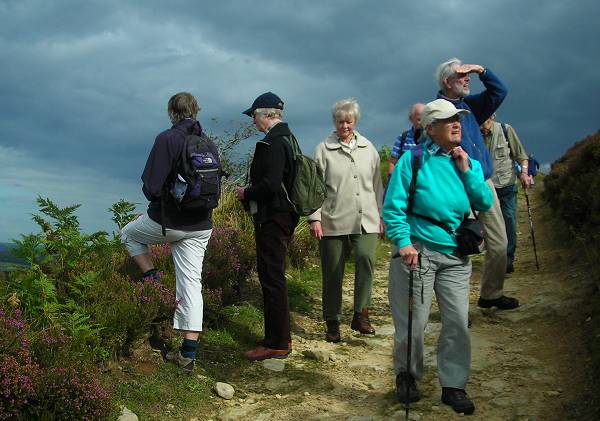
After a short search we found one thriving plant of this large heath, which resembles bell heather on steroids although the leaves are different on closer examination, but the other two plants that were present last year have apparently disappeared. This strengthens the argument that this species is an escape here (its native range is confined to Connemara in western Ireland and parts of western France, Spain and Portugal). Whether it arrived on someone’s boots, or the tyres of a passing vehicle, or a bird’s feet is unknown. The picture below shows it growing beside bell heather so you can see just how big the flowers are.
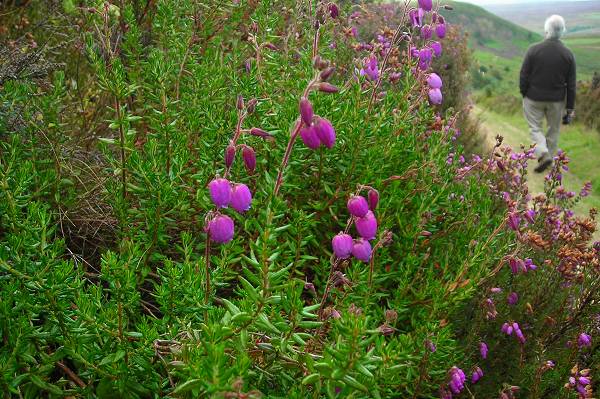
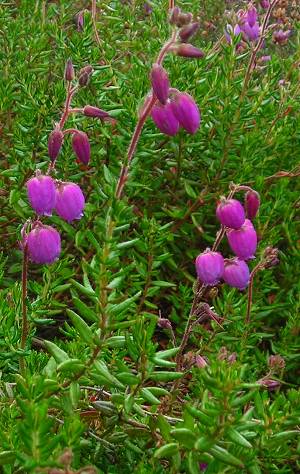 |
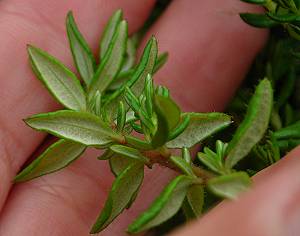 Details of the flowers (left) and leaves showing the characteristic white underside (right). |
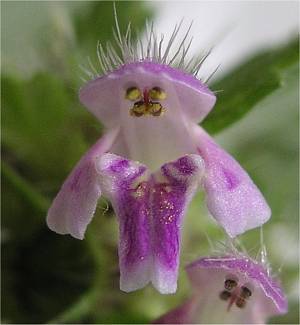 One other interesting find at the edge of the coniferous woodland was bifid Hemp-nettle (Galeopsis bifida), a rather untidy plant like a tall dead-nettle, but with flowers that are exquisite in close-up (thanks to Nan for this photo).
One other interesting find at the edge of the coniferous woodland was bifid Hemp-nettle (Galeopsis bifida), a rather untidy plant like a tall dead-nettle, but with flowers that are exquisite in close-up (thanks to Nan for this photo).
I did not make a detailed flower list as the main purpose of the trip was to see the Daboecia.
Birds
There were house sparrows, swallows and martins flying around the farm, and up on the rigg we heard or saw willow warbler, woodpigeon, stock dove, pheasant and meadow pipit. There was a buzzard quartering the area south of the bank top that we watched on the way back. (Thanks, Jim.)
We returned to the cars at about 5:30, where Tom thanked everyone for coming, and of course Nan for leading the trip and, as ever, being such a source of knowledge and enthusiasm.
| Gill Smith | Back to the Index page |
Text and photos © Gill Smith 2007 and Nan Sykes (Galeopsis bifida)